Corey Burton is an American voice actor. He is the current voice of Captain Hook, Ludwig Von Drake and others for The Walt Disney Company, Shockwave on The Transformers, Brainiac in the DC Animated Universe, Count Dooku and Cad Bane in the Star Wars franchise, Zeus in the God of War series and Hugo Strange in Batman: Arkham City.

Atlantis: The Lost Empire is a 2001 American animated science fiction action-adventure film produced by Walt Disney Feature Animation and released by Walt Disney Pictures. It was directed by Gary Trousdale and Kirk Wise and produced by Don Hahn from a screenplay by Tab Murphy. The film features an ensemble voice cast that includes Michael J. Fox, Cree Summer, James Garner, Leonard Nimoy, Don Novello, Phil Morris, Claudia Christian, Jacqueline Obradors, Jim Varney, Florence Stanley, John Mahoney, David Ogden Stiers and Corey Burton. Set in 1914, the film tells the story of young linguist Milo Thatch, who gains possession of a sacred book, which he believes will guide him and a crew of mercenaries to the lost city of Atlantis.
The Atlantean language is a constructed language created by Marc Okrand, especially for the Walt Disney Feature Animation film Atlantis: The Lost Empire. The language was intended by the script-writers to be a possible mother language, and Okrand crafted it to include a vast Indo-European word stock with its very own grammar, which is at times described as highly agglutinative, inspired by Sumerian and North American Indigenous languages.

An E ticket was a type of admission ticket used at the Disneyland and Magic Kingdom theme parks before 1982, where it admitted the bearer to the newest, most advanced, or popular rides and attractions.
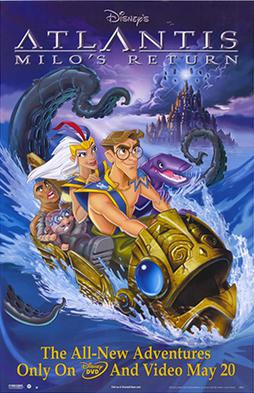
Atlantis: Milo's Return is a 2003 American animated science fiction film directed by Victor Cook, Toby Shelton, and Tad Stones. It is the sequel to Atlantis: The Lost Empire (2001). The film received a direct-to-video release on May 20, 2003.

Tomorrowland is one of the many "themed lands" featured at all of the Magic Kingdom styled Disney theme parks around the world owned or licensed by The Walt Disney Company. Each version of the land is different and features numerous attractions that depict views of the future. Disneyland Park in Paris includes a similar area called Discoveryland, which shares some elements with other Tomorrowlands but emphasizes visions of the future inspired by Jules Verne.

Finding Nemo Submarine Voyage is an attraction in the Tomorrowland area of Disneyland Park in Anaheim, California. It opened on June 11, 2007. Based on the characters and settings of the 2003 Disney·Pixar film Finding Nemo, it is a re-theming of the classic Submarine Voyage attraction that operated from 1959 to 1998.

Autopia is a race car track Disneyland attraction, in which patrons steer specially designed cars through an enclosed track. Versions of Autopia exist at Anaheim, California and Disneyland Paris in Marne-la-Vallée, France. There was also an Autopia at Hong Kong Disneyland on Lantau Island, Hong Kong before it closed on June 11, 2016. Other versions of the attraction can be found at the Magic Kingdom as the Tomorrowland Speedway and formerly at Tokyo Disneyland as the Grand Circuit Raceway. A previous generation of Disneyland's Autopia operated for over a decade at the Walt Disney Hometown Museum in Marceline, Missouri; one of the retired cars is now on display.

Mickey's Toontown is a themed land at Disneyland and Tokyo Disneyland, two theme parks operated by Walt Disney Parks & Resorts and The Oriental Land Company respectively. At Tokyo Disneyland, this land is named Toontown. A similar land existed at the Magic Kingdom until 2011 and was named Mickey's Toontown Fair. Walt Disney Studios Park in Disneyland Paris has a related land called Toon Studio.

The Submarine Voyage was an attraction at Disneyland in Anaheim, California. The attraction features vehicles designed to resemble submarines. It first opened on June 14, 1959, as one of the first rides to require an E ticket. It was part of a major expansion of Tomorrowland, which included the Matterhorn Bobsleds roller coaster, an expanded version of Autopia, the Disneyland Monorail, and the Motor Boat Cruise. The Submarine Voyage closed on September 8, 1998; at that time, it was reported that the attraction would reopen with a new theme by 2003, but that did not occur. The attraction ultimately reopened in June 2007 themed to Disney and Pixar's Finding Nemo, and now operates as Finding Nemo Submarine Voyage.
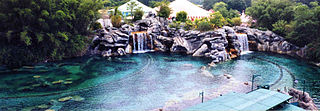
20,000 Leagues Under the Sea: Submarine Voyage was an attraction at the Magic Kingdom theme park at Walt Disney World from 1971 through 1994. Based on the characters and settings of the 1954 Disney film 20,000 Leagues Under the Sea, it was a re-theming of the Submarine Voyage attraction at Disneyland. The ride involved a 20-minute submarine ride through a lagoon filled with sea life and mermaids.
Pirates of the Caribbean is a Disney media franchise encompassing numerous theme park rides, a series of films, and spin-off novels, as well as a number of related video games and other media publications. The franchise originated with Walt Disney's theme park ride of the same name, which opened at Disneyland in 1967 and was one of the last Disneyland attractions overseen by Walt Disney. Disney based the ride on pirate legends, folklore and novels, such as those by Italian writer Emilio Salgari.
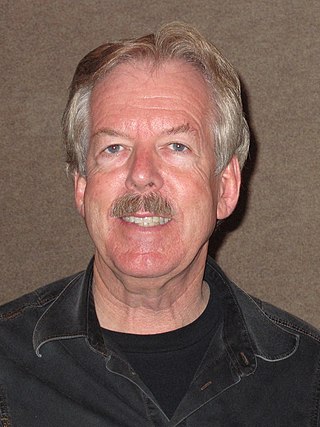
Tony Wayne Baxter is the former senior vice president of creative development in Walt Disney Imagineering and was responsible for creating designs and carrying out the construction of attractions all over the world. He announced his departure from his full-time position to become a part-time adviser on February 1, 2013, which was also his 66th birthday. During his 47-year tenure with the company, he oversaw the construction of multiple contemporary Disney theme park attractions, including Big Thunder Mountain Railroad, Star Tours, Splash Mountain, The Indiana Jones Adventure, and Journey Into Imagination, and served as the executive producer of Disneyland Paris.
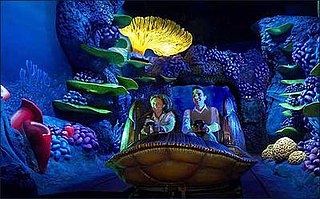
Crush's Coaster is a spinning roller coaster at Walt Disney Studios Park in Disneyland Paris. The attraction officially opened on June 9, 2007 as part of an expansion project in Toon Studio, an area within Walt Disney Studios Park formerly known as Animation Courtyard. The ride is themed to Disney-Pixar's Finding Nemo film, and named after Crush, a green sea turtle voiced by Andrew Stanton from the movie. Most of the roller coaster is enclosed and features dark ride special effects.

Finding Nemo is a CGI animated film series and Disney media franchise that began with the 2003 film of the same name, produced by Pixar and released by Walt Disney Pictures. The original film was followed by a sequel, Finding Dory, released in 2016. Both films were directed by Andrew Stanton. The film series received widespread critical acclaim from critics and audiences with two films released to-date, the series has grossed $1.9 billion worldwide.
Tarzan is a Disney media franchise that commenced in 1999 with the theatrical release of the film Tarzan, based on the character Tarzan by Edgar Rice Burroughs.
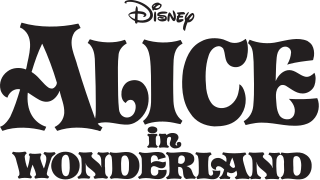
Alice in Wonderland, or simply Alice, is a Disney media franchise, commencing in 1951 with the theatrical release of the animated film Alice in Wonderland. The film is an adaptation of the books by Lewis Carroll, the 1865 novel Alice's Adventures in Wonderland and its 1871 sequel Through the Looking-Glass, which featured his character Alice. A live-action film directed by Tim Burton was released in 2010.
Cinderella is a Disney franchise that commenced in 1950 with the theatrical release of the 1950 film Cinderella. The series' protagonist is Cinderella, who was based on the character of the same name from the Cinderella fairy tale.

20,000 Leagues Under the Sea (海底2万マイル) is an attraction at Tokyo DisneySea, based on Jules Verne's novel Twenty Thousand Leagues Under the Sea and Disney's 1954 film 20,000 Leagues Under the Sea.














